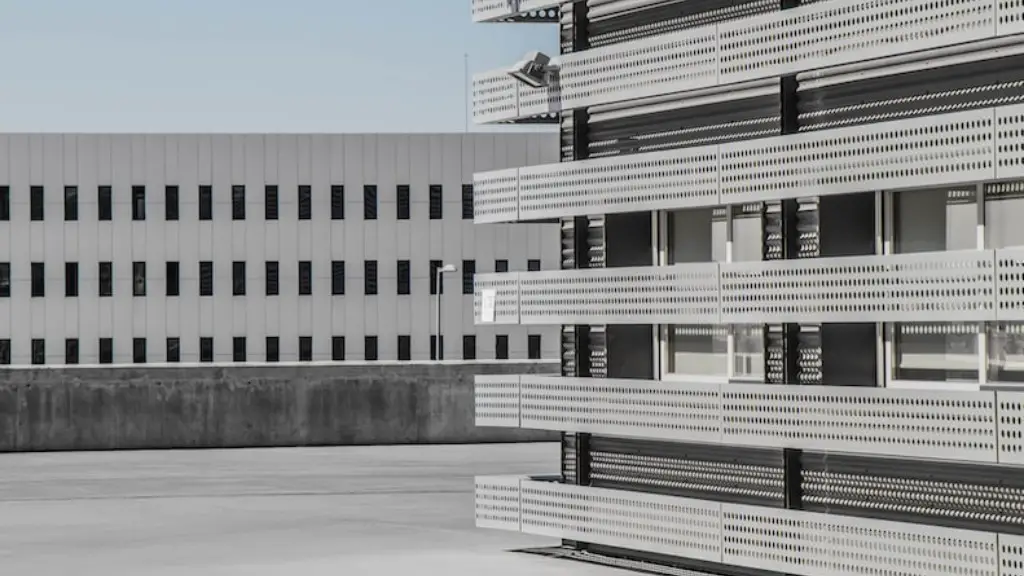An application architecture is a core set of principles and guidelines that determine the structure and behavior of an application or related system. It consists of various elements such as user interface, application programming, hardware requirements, database access, communication protocols, and data management. In today’s digital world, application architecture plays a vital role in determining how applications are built and deployed in an enterprise.
Application architecture can be divided into several categories, including technical architecture, service-oriented architecture, object-oriented architecture, and data-centric architecture. Each of these categories has its own benefits and drawbacks. For instance, technical architecture focuses more on the hardware and software requirements of an application while service-oriented architecture focuses on the design of services and their connections.
Object-oriented architecture takes a more holistic view of the application, while data-centric architecture looks at how data can be manipulated. All these architectures have their uses in application development, depending on the specific needs of an organization.
In order to develop and maintain an effective application architecture, organizations need to understand how each architecture works, the benefits and drawbacks of each, and the risks associated with each. Organizations also need to consider how their applications will interact with other pieces of software and hardware in the system.
Experts often recommend developing an application architecture with an eye towards the future so that the architecture can be easily upgraded when new technologies or changing requirements emerge. Additionally, an in-depth understanding of the technologies and platforms involved in an application architecture helps organizations deploy their applications properly and maintain them over time.
Organizations should also keep in mind that application architectures are always in flux as different technologies emerge. For example, a company may have invested heavily in a particular architecture, but if that architecture becomes obsolete, the company may need to migrate to a newer architecture. Therefore, organizations must plan for the long-term when designing an application architecture.
In conclusion, an application architecture is a key element of application development and deployment. Organizations must understand the different architectures and the risks associated with each in order to develop an optimal solution that meets their specific needs. With a solid understanding of the different types of architecture and the benefits and drawbacks associated with each, organizations can select the architecture that is best for their applications and deploy them properly.
Data-Centric Architecture
Data-centric architecture is one of the major types of application architectures in use today. This type of architecture focuses on the manipulation of data above all else, meaning that all other aspects of the system such as user interfaces and application programming take a back seat in comparison. It is the core of any data-driven application, and its purpose is to provide a framework for the organization and manipulation of data.
An important feature of data-centric architecture is that it enables the linking of data elements together, which can provide a variety of advantages. For example, data elements can be linked together to form complex data structures that are easier to maintain and manipulate. Data-centric architecture can also facilitate the sharing of data between systems, which is essential in today’s distributed computing environment.
Data-centric architecture can also provide the flexibility needed to cope with changing data requirements. This flexibility can help keep an application up to date with the ever-evolving needs of the organization.
In addition, data-centric architecture can be optimized for scalability, meaning that the architecture can be used in applications that need to scale quickly in order to meet the demands of a rapidly growing user base. This scalability can also be useful for applications that use large amounts of data or those that process a lot of data.
Overall, data-centric architecture can be a powerful tool for developing data-driven applications. As long as an organization is aware of the risks and benefits associated with the architecture, it is possible to create an effective and reliable data-driven application.
Service-Oriented Architecture
Service-oriented architecture (SOA) is another popular architecture in use today. This type of architecture focuses on the design of services and their connections to one another. This makes it ideal for applications that require a lot of interaction between different components, such as those that need to communicate with external services or APIs.
One key benefit of SOA is that it facilitates the rapid development of applications. By breaking down complex applications into smaller, modular components, developers can focus on developing each component separately. This makes application development more efficient and lessens the chance of errors.
Additionally, SOA can reduce application maintenance costs. By breaking an application down into smaller components, developers can more easily identify and fix bugs or security issues. Furthermore, SOA can help organizations implement new features more quickly, as the individual components can be updated or replaced without needing to overhaul the entire application.
However, while SOA can provide many benefits, it is important to keep in mind that it is more complex than other types of architectures. Organizations should make sure that they understand the risks associated with the architecture and plan for them accordingly. Additionally, organizations should make sure that their developers have an adequate understanding of the architecture in order to develop applications properly.
Object-Oriented Architecture
Object-oriented architecture is another commonly used type of application architecture. This type of architecture takes a more holistic view of the application and is based on the concept of objects. Objects are self-contained units that contain both data and the code necessary to manipulate the data.
Object-oriented architecture has several advantages. First, the use of objects helps to maintain and support a more organized code base. Second, objects can help developers easily and quickly implement common tasks such as displaying data or calculating statistics. Third, object-oriented architecture enables developers to create applications that can be easily extended and adapted to meet changing requirements.
Object-oriented architecture also supports rapid development. Developers can quickly create complex applications by leveraging existing code and components. This helps reduce development time and costs, as well as minimize the potential for errors.
On the other hand, object-oriented architecture can be daunting for developers that are new to the architecture. Developers must be familiar with the concepts of objects, classes, inheritance, and polymorphism in order to properly design and code an application. Additionally, object-oriented applications can be difficult to maintain over the long run, as code changes can impact the entire application in unexpected ways.
Technical Architecture
Technical architecture is one of the oldest types of application architectures and is still in widespread use today. This type of architecture focuses on the hardware and software requirements of an application, such as the operating system, programming language, database server, and file system.
Technical architecture has several advantages. First, it is relatively simple to understand and implement. Second, it is relatively easy to maintain, as applications can be updated without needing to change the underlying architecture. Finally, it is often cheaper to develop applications using this type of architecture as it requires fewer specialized components.
However, technical architecture can be limited in scope. Organizations cannot easily modify the underlying architecture to meet changing requirements or new technologies. Additionally, as the architecture is focused on specific hardware and software components, any updates or patches to those components can potentially impact the entire application.
Overall, technical architecture has stood the test of time and is still used in many applications today. Despite its limitations, the simplicity of this type of architecture makes it the perfect choice for organizations that need to quickly develop and deploy applications.
Conclusion
Application architectures are an essential component of application development and deployment. Different architectures offer different advantages, but all must be chosen and implemented carefully to ensure that the application meets the organization’s specific needs. With a solid understanding of each type of architecture and the risks and benefits associated with each, organizations can make informed decisions when selecting the right architecture for their applications.





